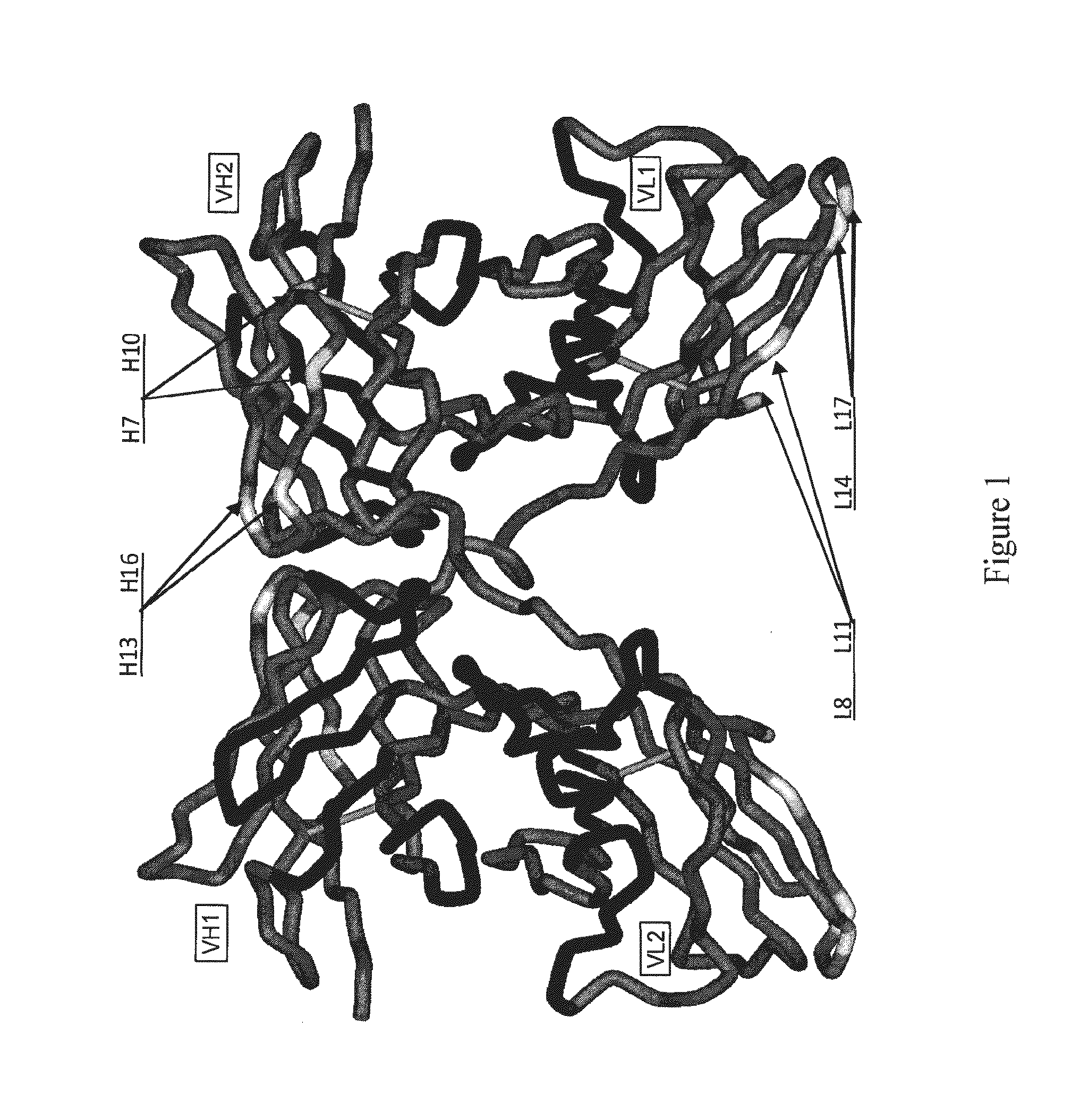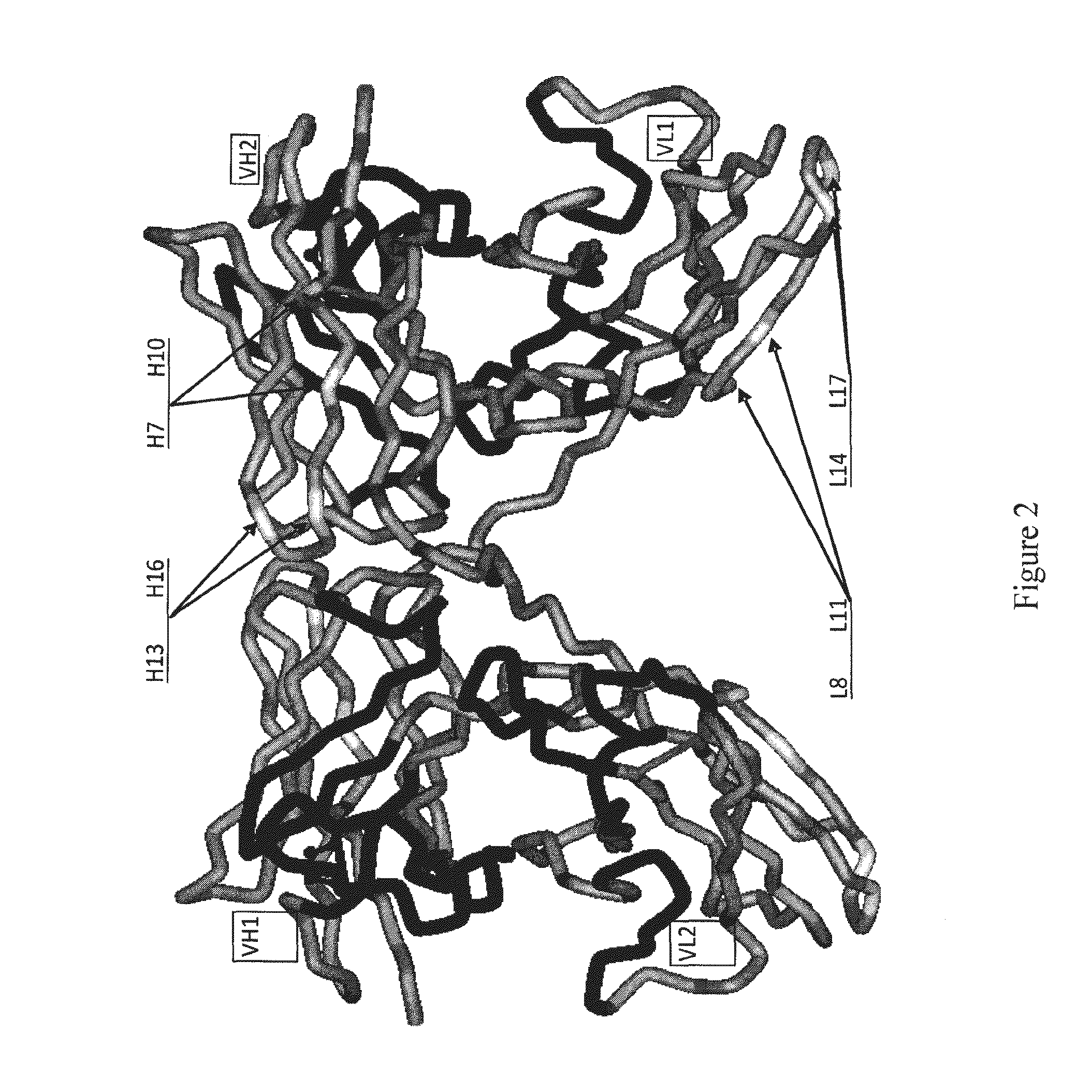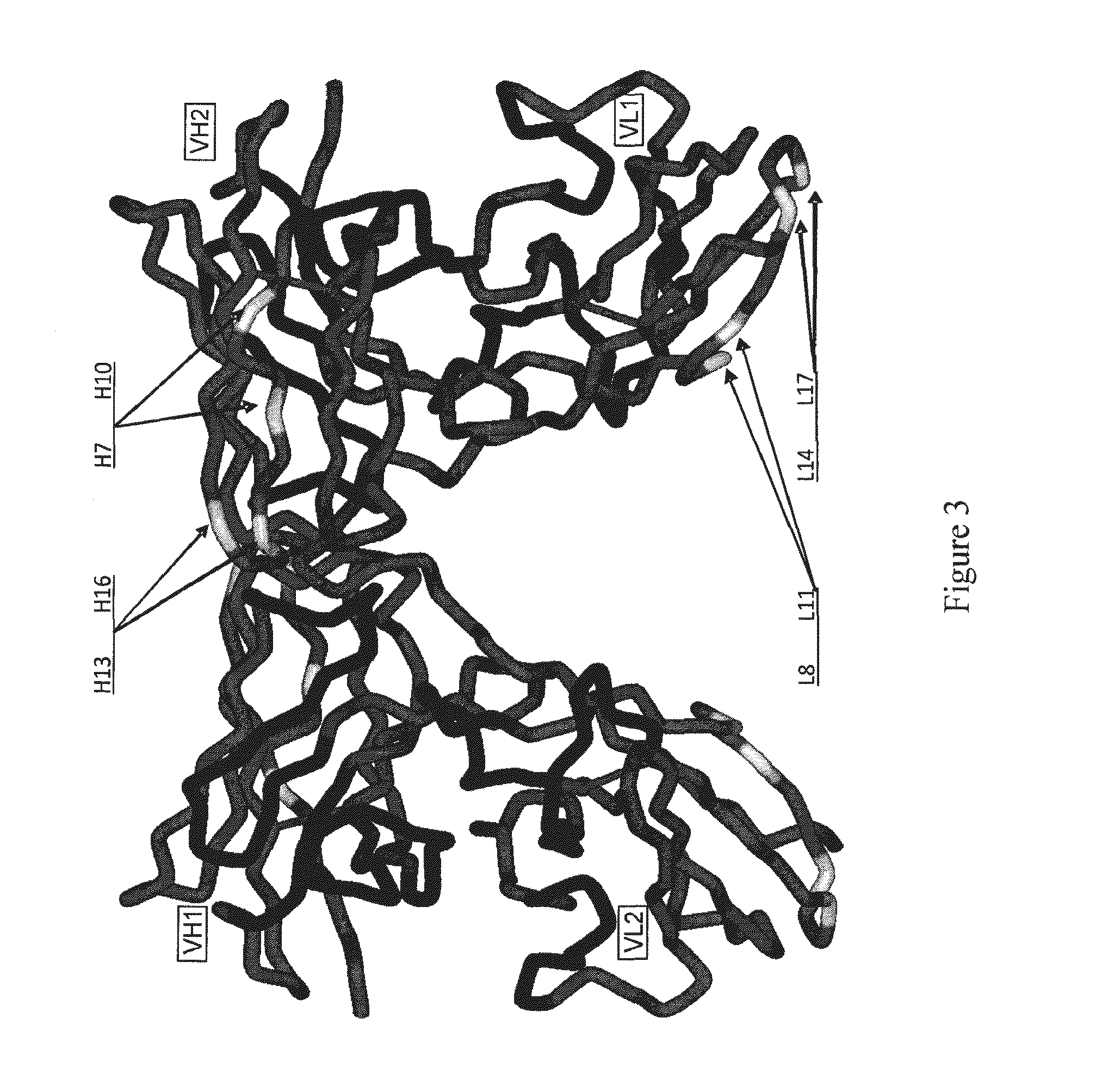Immuno-conjugates and methods for producing them
a technology of immunoglobulin and conjugates, applied in the field of proteins, can solve the problems of reducing the likelihood of linking multimers and/or aberrantly folded variable regions, and radioisotopes not preventing binding, so as to reduce or prevent the bonding of residues, and facilitate the production and/or isolation of functional proteins
- Summary
- Abstract
- Description
- Claims
- Application Information
AI Technical Summary
Benefits of technology
Problems solved by technology
Method used
Image
Examples
example 1
1.1 Generation of Molecular Models for Avibodies
[0527]Avibodies are recombinant proteins comprising variable domains of antibodies. Avibodies utilize the variable domains of monoclonal antibodies by fusing them into a single polypeptide chain interspersed by a short linker region in either VH-to-VL or VL-to-VH orientation. Depending on the linker length, these Avibodies are designed to form stable, biologically active monobodies (scFv), diabodies, triabodies or tetrabodies containing one, two, three or four functional binding sites respectively.
[0528]The VH and VL domain sequences of the Avibodies modeled were used to search the RCSB PDB Data bank (www.pdb.org) using both BLAST and / or FASTA searches. The structure hits with the highest sequence identity, resolution and completeness were selected for use as templates for the Fv domains of the modeled Avibodies. If the asymmetric unit in a pdb file contained more than one template model all templates were used and t...
example 4
In Vitro Immunoreactive Assessment of Diabodies
[0622]Binding activity to soluble antigen was established by a column shift assay using size exclusion chromatography. The antigen for the AVP04-xx Avibodies is TAG72, available in soluble form from bovine submaxillary mucin (BSM) (Sigma). For the AVP07-xx Avibodies, the soluble antigen is recombinant HER2 ectodomain. For the AVP02-xx Avibodies, the soluble antigen is recombinant full length MUC1. Irrespective of Avibody or antigen, the column shift assay was performed essentially as described below.
[0623]At least two times molar excess of soluble antigen to diabody was incubated for 1 hr in PBS buffer at ambient temperature. Binding activity was determined by comparing the resulting Avibody-antigen complex peak to the free diabody peak. A positive binding result was regarded as the depletion of the peak corresponding to free Avibody and / or increased size of the peak corresponding to an Avibody-antigen complex following incubation. The ...
example 5
Quantification of Free Sulphydryls in Thiolated Avibodies
[0627]Thiolated Avibodies could be routinely expressed and purified to substantial homogeneity and were shown to be functionally active. The presence of engineered intra-Framework 1 disulphide bridges in thiolated Avibodies, and their availability to reduction, was assessed by a colorimetric assay.
[0628]Thiolated Avibodies were incubated with 3.8 mM of TCEP (Tris(2-carboxyethyl)phosphine hydrochloride) (Pierce, Rockford, Ill., USA) in PBS for 25 min at RT. Following reduction, TCEP was removed with a PD10 desalting column pre-equilibrated with 100 mM phosphate buffer+1 mM EDTA pH 6.5, collecting 0.5 mL fractions. Peak protein fractions were identified by UV spectroscopy and pooled.
[0629]To test reactive thiols, 50-75 μg of reduced protein was diluted in 100 mM sodium phosphate buffer, 1 mM EDTA, pH 8.0 with 5 μl of 4 mg / mL Ellman's reagent (5,5′-Dithio-bis(2-nitrobenzoic acid); DTNB) (Pierce, Rockford, Ill.). The reaction was ...
PUM
| Property | Measurement | Unit |
|---|---|---|
| Fraction | aaaaa | aaaaa |
| Molar density | aaaaa | aaaaa |
| Molar density | aaaaa | aaaaa |
Abstract
Description
Claims
Application Information
 Login to View More
Login to View More - R&D
- Intellectual Property
- Life Sciences
- Materials
- Tech Scout
- Unparalleled Data Quality
- Higher Quality Content
- 60% Fewer Hallucinations
Browse by: Latest US Patents, China's latest patents, Technical Efficacy Thesaurus, Application Domain, Technology Topic, Popular Technical Reports.
© 2025 PatSnap. All rights reserved.Legal|Privacy policy|Modern Slavery Act Transparency Statement|Sitemap|About US| Contact US: help@patsnap.com



